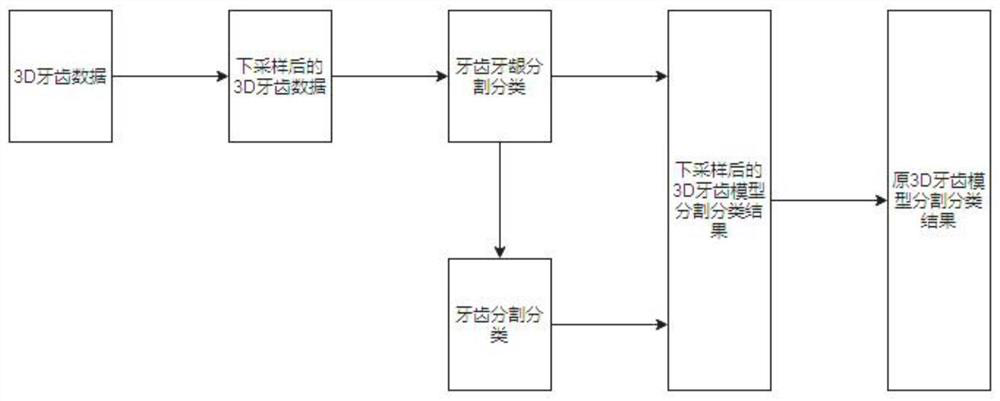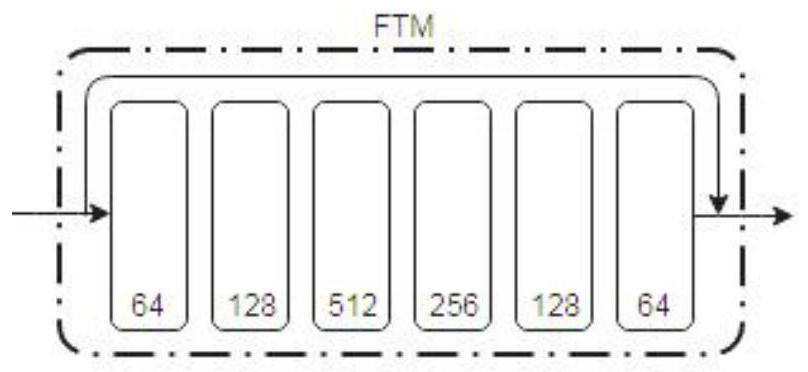3D tooth segmentation and classification method based on deep learning
A technology of deep learning and classification methods, applied in the field of 3D tooth segmentation and classification based on deep learning, can solve the problems of not particularly ideal performance, the network ignores the local geometric context, etc., and achieve the effect of reducing manual interaction time and improving work efficiency
- Summary
- Abstract
- Description
- Claims
- Application Information
AI Technical Summary
Problems solved by technology
Method used
Image
Examples
Embodiment Construction
[0064] The present invention will be further described below with reference to the accompanying drawings and examples.
[0065] like figure 1 As shown, the present invention is based on a depth convolutionary network, and a multi-stage segmentation of the 3D dental splitting task is multi-stage, and then combined with the graphic algorithm, the automated marking task of 3D teeth is completed. The entire model framework is divided into four stages, and the whole process is seen. figure 1 (The flow chart of the present invention), there will be a series of steps at each stage, and the four stages are as follows:
[0066] Stage 1: Sample Data Collection and Production
[0067] Stage 2: Construction and training of two-cut depth network models between teeth and gums
[0068] Phase 3: Construction and training of deep network models based on the sixteen segmentation between teeth
[0069] Stage 4: The result of integrated stage two and stage three
[0070] 1. The main steps of the data...
PUM
 Login to View More
Login to View More Abstract
Description
Claims
Application Information
 Login to View More
Login to View More - R&D
- Intellectual Property
- Life Sciences
- Materials
- Tech Scout
- Unparalleled Data Quality
- Higher Quality Content
- 60% Fewer Hallucinations
Browse by: Latest US Patents, China's latest patents, Technical Efficacy Thesaurus, Application Domain, Technology Topic, Popular Technical Reports.
© 2025 PatSnap. All rights reserved.Legal|Privacy policy|Modern Slavery Act Transparency Statement|Sitemap|About US| Contact US: help@patsnap.com



